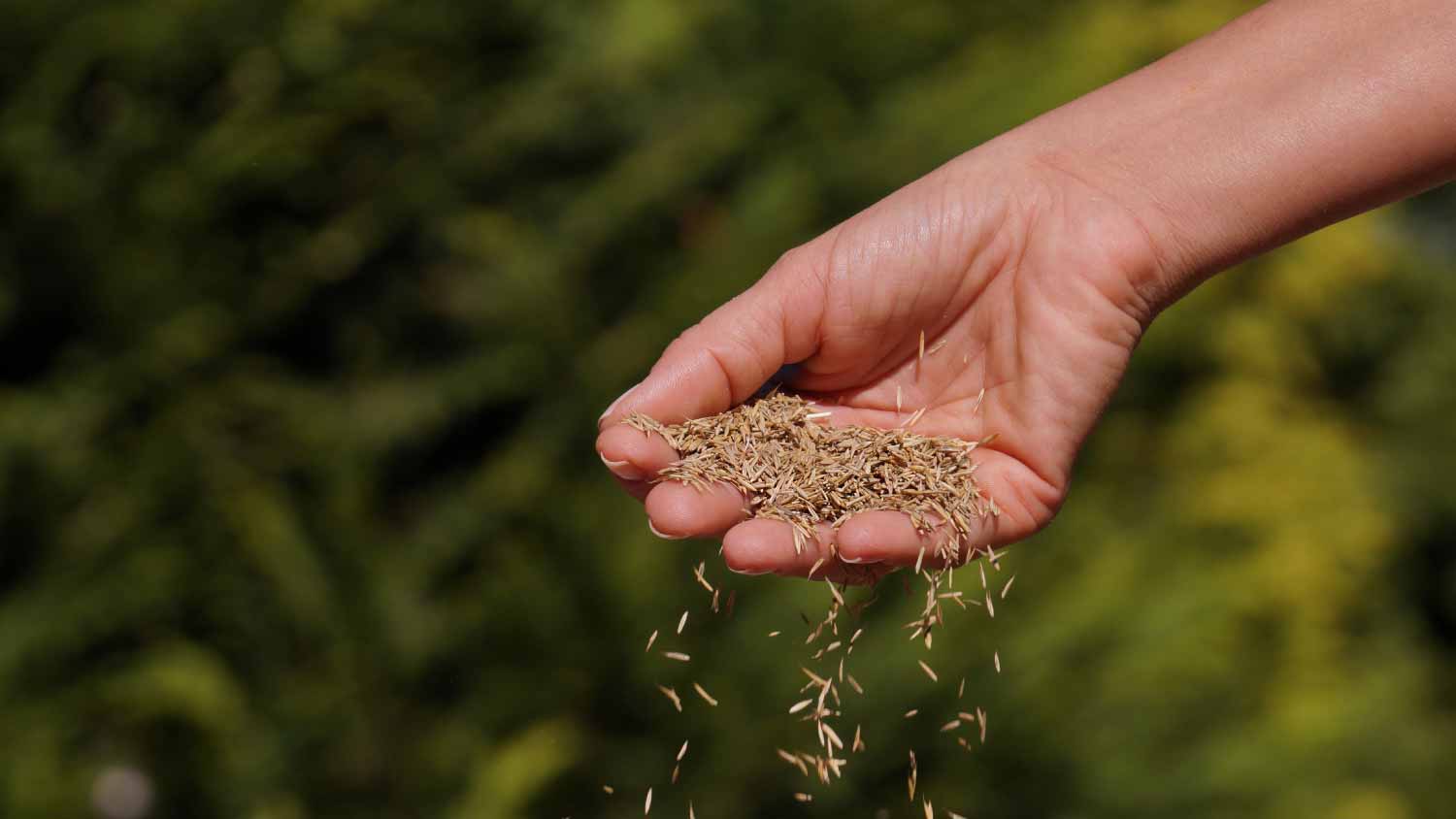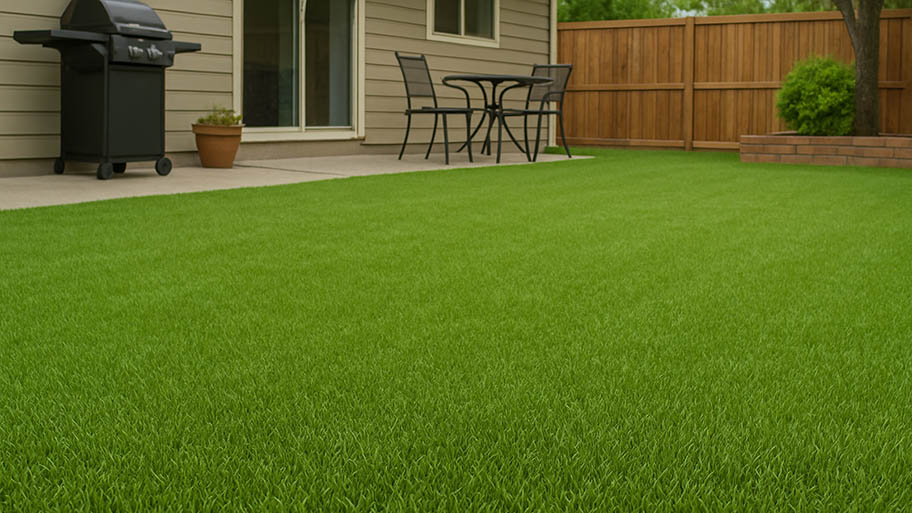
Removing an old lawn is often necessary to plant new grass or build a new outdoor structure. Find out what to budget for your lawn removal cost.
Give your lawn its best possible start


Planting the right amount of seed is essential.
Grass seed products typically contain more than just seeds.
Different grass seed products have different coverage details, so read manufacturer’s instructions.
Starting a new lawn from seed is a cost-effective way to create a beautiful yard. However, you’re likely wondering how much seed you need for a new lawn to flourish. Luckily having a few tricks on your side and working with a lawn seeding professional can help maximize your efforts. Learn how much seed you need for a new lawn and other tips and tricks to help ensure success.
Calculations are based on the average square footage of a yard, which is 10,871 square feet. We calculated the necessary seed amount for overseeding a lawn. Calculations rounded to the nearest whole number.
| Measurement Input | Result |
|---|---|
| Seed Coverage Area | 10,871 square feet |
| Pounds of Seed per 1,000 square feet | 11 |
| Number of pounds of seed needed for overseeding | 33 pounds |
Most grass seed products list two coverage amounts on the back of each seed package. One amount is for overseeding. This smaller quantity is useful for determining how much you'll need when reseeding over an existing lawn. The other quantity is the bare-ground seed-coverage number. This designation is the larger quantity and tells you how much you'll need based on the planting area. It’s best to hire a local lawn seeding service to determine how much seed your yard needs before expertly planting them.
The packages typically provide these coverage amounts representing pounds of seed per 1,000 square feet. To determine the square footage of your lawn, measure the entire area, multiplying the length by the width of your property. Then, measure things like the driveway, sidewalks, patios, gardens, or other areas that won't receive grass seed and subtract them from the total.
Divide the net square feet of the area you're seeding by 1,000. Multiply that result by the number of pounds per 1,000 square feet listed on the product, depending on whether you're overseeding or planting a new lawn.
The general rule for overseeding a lawn is to apply around three pounds of seed product to every 1,000 square feet. However, a thin lawn may require up to five pounds per 1,000 square feet, while a thicker one may only require two pounds. Use the overseeding amount on the package as a guide and adjust the amount as necessary.
Seeding a new lawn will require between four and eight pounds of grass seed, depending on the grass type and seed product. You should closely follow the recommended coverage amount for new-lawn seeding for the product you purchase. Generally, a 50-pound bag of seed will cover about 10,000 square feet. However, the type and product can vary that amount substantially.
It's possible to over or under-seed a new or existing lawn. Under-seeding can leave bare brown grass patches and solidified soil after seed germination and growth. Not putting down enough seed can also leave your new lawn ripe for an invasion of weeds.
On the other hand, spreading more seeds than necessary can also cause issues and doesn't ensure a thick, healthy lawn. Overseeding means you'll spend more money than you need to without getting any extra benefits. Putting down too much grass seed can lead to a clumpy lawn or maturing grass that's packed too tightly together. This condition forces the plants to compete for space and resources while also presenting the risk of lawn diseases and mold or fungus.

There's more than meets the eye regarding a bag of grass seed. Besides actual seeds, a bag of the stuff often contains things like coatings, fillers, fertilizers, and even other types of grass seeds. In fact, grass seed mixes or blends typically include many grass seed types in the same product.
Before spreading any grass seed, knowing which types are best for your climate zone and the type of lawn you desire is essential. Grasses are available in two basic types, including warm-climate types and cold-climate grasses. Choose warm-weather varieties if you live in a warmer climate and cold-weather grasses to plant in chillier climates. Consider a blend of both types if you're somewhere in the middle.
Even seeding coverage is essential for giving your lawn the best chance of filling in properly.
Most grass seed products will include the proper spreader settings regarding coverage amounts. Often, the product will list or refer you to the correct settings for various types and models of spreaders. Choose your spreader type and model and compare it to the overseeding or new lawn coverage amounts to determine your correct spreader setting.
Using a walk-behind spreader is the fastest and most accurate method of spreading seed in your lawn. A drop spreader is just as it sounds. As you walk behind it, it drops the seed straight down from the hopper. Use a drop spreader by overlapping the wheel marks of the last pass to ensure even coverage.
A broadcast spreader tosses the seed in front of and to the sides of the spreader by up to several feet. Walk behind a broadcast spreader at an even speed for the best results. Start with the perimeter of the lawn and then fill in by overlapping each pass by about one foot or less, depending on the instructions for your spreader.
From average costs to expert advice, get all the answers you need to get your job done.

Removing an old lawn is often necessary to plant new grass or build a new outdoor structure. Find out what to budget for your lawn removal cost.

Your total lawn care cost depends on several factors, including the type of service and lawn size. Our guide will cover what you can expect to pay for lawn care.

Artificial grass is a low-maintenance alternative to traditional turf. Learn how much artificial grass installation costs and what affects your price.

If you’re wondering how much to charge to mow a lawn, factor in your hourly rate, cost per square foot, and flat rate fees. Keep reading to learn more.

Curious how to kill weeds in your grass and keep them from popping up every season? Here are five weed-fighting methods to beautify your lawn.

If you’re trying to decide between monkey grass vs. mondo grass, consider where you live and the desired ground cover effect.